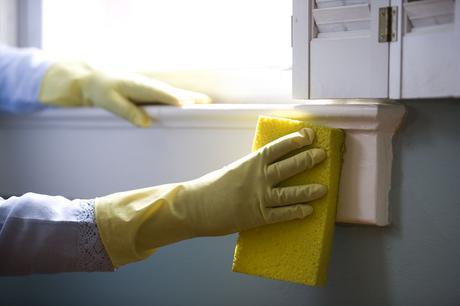
#ChoreChallenge 2016
In 1989, sociologist Arlie Hochschild noticed a pervasive, but rarely acknowledged, form of everyday sexism happening around her. While women had made great strides in terms of entering the workforce, they were still expected to do the majority of domestic work traditionally expected of women in addition to their professional work — a phenomenon she deemed “the Second Shift.”
Although Hochschild wrote the book decades ago, this “second shift” persists today. A 2014 Bureau of Labor Statistics report showed that on a typical day, nearly half of women employed outside the home do housework while only 19% of men do. As Laura Bates, one of the co-organizers of the challenge, noted in the Guardian, a recent BBC survey found that women spend twice as much time on chores as men — spending the equivalent of about one working day per week to domestic tasks — and a Mumsnet survey found that only 5% of men cleaned their home weekly whereas 71% of women did. But several activists want to do something about it. Everyday Sexism‘s Laura Bates, Soraya Chemaly, an Ishita Srivastava of Breakthrough, have teamed up and launched the 2016 #ChoreChallenge, which is asking people to gender swap their domestic work. Chemaly, who has outlined the rules for the challenge in a Huffington Post piece, discussed the ideas behind the challenge and what she and her co-organizers hope to accomplish with the FBomb. It seems we’ve pushed back on rigid gender stereotypes in other realms of society. Why do you think chores are still so gendered? I think that people are tired, stressed and just want to be efficient. They don’t want to have to think about who does what, and really not in disruptive ways. A lot of families are already struggling with the way gender roles have evolved. Women have always been expected to adapt to men’s needs, to emulate them, to adopt the way men do things. To date, however, men haven’t. If you search chores in Google, an interesting pattern develops. When chores are “men’s,” you find images of men and women doing them equally and, often, looking happy. When they are “women’s” — like cleaning toilets and kitchens — the women are still smiling, but the men are more likely to look disgusted, inept, confused. Can you discuss how this “second shift” exists in less obvious ways? A lot of the gap, it turns out, is in invisible work. Yes, women do more baby changing, feeding and care, which doesn’t require being a woman, but they are also doing more of the gift buying, social engaging, volunteering — the kind of work that centers around managing how people feel, in sustained ways. How does this gendered “second shift” take a toll on women? How does it contribute to overall, persistent inequality? While men report very high levels of work/stress tension, studies continue to show that when it comes down to actual time spent, girls and women, on average continue to do far more. Men tend to overestimate their contributions when time is actually measured. Women report higher levels of fatigue, anxiety, loss of sleep. Also, while both men and women initiate breakups among the unmarried, married women initiate more divorces, often because of inequality in families. Marriage is a “gender factory.” Do you think men’s tendency to overestimate how much domestic work they contribute speaks to criticisms of “male feminist” efforts as lax or superficial more generally? How can men be true allies and/or feminists — and how can this challenge help them do so? While millenial men tend to have the most gender-equal ideas and aspirations of any generation, once children enter the picture, any pretense of that falls away. One U.S. survey, for example, found that prior to having children, 24% of millennial men expected to have equal responsibility for childcare but that number dropped to 8% after a child was born. More disturbing even yet is that when men do have access paternity leave, they are taking it primarily when their child is a boy and, most often, a first-born. In other words, boys are still being very deeply socialized to expect a spouse who sacrifices public and professional life to prioritize men’s income-earning. Women, however, consistently express the need and desire to work outside of their homes with parity. When educated women find they have little institutional support to do so, however, they’re more likely to fall back on traditional gender roles than aer working class women without college degrees. Among the working-class, the gender gaps become even wider and women are more likely to stay single. Those who stay home out of necessity, because of social pressure or a lack of institutional support for working with children, express higher levels of depression and anxiety. How do you hope this challenge and re-thinking these roles can be meaningful particularly for teens or young adults? Primarily, I wanted the challenge to be a way for people, including kids and teens, to talk about problems that often exist but for which they have no real words. People sense basic inequities, but they don’t want to rock boats or create stress. The problem is existing inequities are already doing that, so we should be surfacing them and equipping people, especially girls and boys, to recognize them and find ways to dismantle them.
